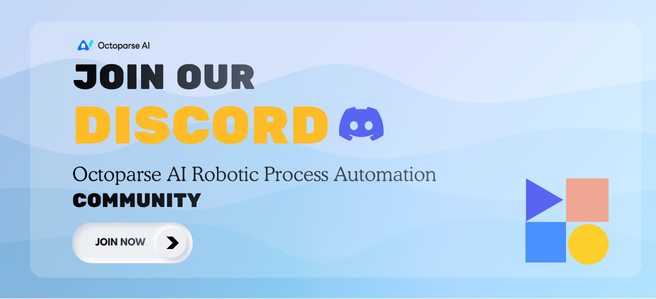Using AI automation helps people and companies draft texts more efficiently, while also increasing readability and capturing audience attention. For marketing, customer service, and even creative endeavors, AI tools and automation help make people’s communications and messages feel personal and authentic.
This connects the machine-generated data and the human experience, thus facilitating multiple sectors and industries with digital content.
So, in today’s article, we are going to cover the following things:
- What are AI automation tools?
- Common defects in AI outputs
- How AI automation tools work to convert AI output
- Popular AI automation tools to humanize AI output
Let’s dive into this!
What are AI Automation Tools?
Automation tools use AI and ML to make business and strategic processes more efficient, ease the burden of manual work, and drive automation in operations. Compared to older automation tools, which follow rigid and static automation designed with hard, pre-programmed rules, AI-enabled automation tools offer greater flexibility.
AI humanizers make automation more user-centered by making AI systems and tools more human-comfort interfaces, thus achieving greater user-friendliness.
How they deal with unstructured data and respond to various situations is the main difference. Traditional automation is very efficient when it comes to dealing with repetitive tasks. Routine tasks with clearly defined boundaries and parameters will fall within the scope of automation. But automating tasks with artificial intelligence does much more. AI automating tools will:
- Understand and process natural language, including the underlying context
- Continuously improve by learning from past interactions
- Make accurate, predictive decisions using pattern recognition
- Handle exceptions and edge cases without human intervention
- Scale operations across systems and departments to enhance efficiency
Octoparse AI, as a free robotic process automation (RPA) tool, pioneers AI-driven workflow automation. Within minutes, it enables AI to recognize user intent and build web automation workflows, integrating automation across all operational stages. This significantly lowers the entry barrier and learning curve for RPA.

According to IDC, spending on AI automation is projected to reach over $630 billion by 2028. Thus, the stakes for making informed decisions about these investments have never been higher for companies considering the adoption of AI-driven automation.
Common Defects in AI Outputs
AI is progressively more adept at content generation, yet the most significant mechanical and unnatural output flaws remain unaddressed. Let’s discuss these flaws.
1. Logical Flow and Transition Issues
Flow and transition issues occur when different ideas aren’t connected properly, which leads to confusion. For improvement, writers should incorporate transition words and phrases, encourage consistency in style and POV, and organize ideas in a coherent manner.
Causes of logical flow and transition issues
- Ideas are poorly connected: New sentences or paragraphs are added, and there are no connections made that would help the reader relate the parts, making the text seem disjointed.
- Inconsistency: Switching POV in the text (like going from “we” to “one”) distracts from the main message.
- Unclear relationships: Readers are left to deduce relationships like cause- and- effect or comparison and contrast, making the ideas seem disconnected.
- Absence of logical structure: Ideas are presented in a random order that does not help the reader or the writer build a clear argument or story.
How to improve logical flow and transitions
In your writing, you can improve logical flow and transitions by using the words “however,” “therefore,” and “in addition” to link your ideas. You may also want to chain your sentences and paragraphs properly so that your readers can flow from one idea to the next. You may also want to maintain consistency across different components like the style, tense, and point of view. Keeping your sentences clear and concise will help as well, and you can ask others for feedback to find what is unclear. Following these suggestions will improve the coherence of your writing.
2. Overuse of Common Phrases
AI models overusing the same phrases and patterns is common. If the same wording is used too often, it makes writing not sound robotic and loses that personal touch. For example, it may be the case that “In conclusion” and “On the other hand” are overused in writing, making it sound mundane and boring.
Examples of overused phrases and alternatives
| Overused Phrase | Alternative(s) |
| “Synergy” | Cooperation, collaboration, working together |
| “Leverage” | Use, utilize |
| “At the end of the day” | Ultimately, finally |
| “Low-hanging fruit” | Easy wins, simple tasks |
| “Think outside the box” | Be creative, find new ways |
| “It’s a no-brainer” | It’s easy, it’s simple |
| “Sold me down the river” | Betrayed me, cheated me |
| “Spirit animal” | Someone who represents my qualities, my alter ego |
| “To be honest…” | Just say what you need to say without the preamble |
3. Monotonic Tone
A monotonous tone is a voice that stays the same, even when it should change. This makes the speech boring, and it is hard to tell the emotions of the speaker. The emotions can be really important, and it is important for the listener to hear them. The term comes from the Greek “monotonia”, which means “one tone”.
Characteristics of a monotonous tone
- Unchanging pitch: The voice remains unwavering without the natural highs and lows and rhythm of natural conversation.
- No emotional expression: The speaker’s tone of voice cannot communicate any feelings, and it becomes hard to identify any emotion.
- Repetitive: The speech becomes far too monotonous to the point that listeners have a hard time remaining attentive.
- Muffled or monotonous: The voice may be flat and spiritless, leading to diminishing the influence of ignitive or significant ideas.
How the AI Automation Tool Converts AI Outputs
AI automation tools are designed to help refine and improve AI-generated content. Here’s how they work, focusing on using em-dashes, refining prompts, and reducing passive voice. I’ll also explain how to humanize AI content and make it sound more natural.
Using Em-Dashes ‘—’ in AI Outputs
In writing, em-dashes signal a pause, add emphasis, or surround interjections. AI tends to overuse em-dashes, resulting in a somewhat clunky or polished piece.
To fix this, you can:
- Replace em-dashes with commas or parentheses when appropriate to improve cohesion of the content.
- Avoid over-simplified reasoning to minimize the use of em-dashes.
Refining Prompts
When it comes to AI-made stuff, each time you ask it a question (aka a prompt), it affects the answer it gives back. Well-structured prompts give clearer and more helpful AI results.
To improve AI output:
- Set better prompts: AI should get a prompt that gives it a certain context. This helps it understand you better and gives more focused answers.
- Be clear and straight to the point: When you give the AI clearer, straightforward instructions, it leaves out fluff and gets closer to what you’re aiming for.
Reducing Passive Voice
The passive voice allows other subjects to act on the sentence’s subject (e.g., “The ball was thrown by the player”). AI tends to use this voice, which makes its text content less direct and harder to understand.
To fix this:
- Convert passive sentences to active voice: Instead of “The ball was thrown by the player,” say “The player threw the ball.”
By doing so, online text humanizers can make your content feel more human-like and natural while maintaining a real meaning.
Popular AI Automation Tools for This Job (Humanizers)
Here are some popular AI automation tools for this job:
Humanize AI Text
Humanize AI Text is a free tool designed to convert AI-generated content into human-like text, making it more natural and less detectable by AI detectors. It allows users to choose different writing styles, such as fluent, academic, or creative, to adjust the tone of the content. The tool is simple to use, with no sign-up required, and supports multiple languages.
Features:
- Multiple Tones: Choose from fluent, academic, formal, and creative styles.
- No Signup Needed: Instant results without the hassle of creating an account.
- SEO-Optimized: AI-generated content can be customized to improve search engine optimization.
- Completely Free: There are no hidden charges.
- Works Across Devices: Your mobile phone, laptop, and desktop work perfectly.
- Bypasses AI Detectors: It removes the AI from a text, and it passes tools that detect AI-generated work.
Stealthwriter
Stealthwriter changes AI-written material without making it readable and undetectable by AI detectors. It rewrites sentences and changes some phrases to make the text seem more human.
Features:
- Minimizing the chances of detection: Changes text so it cannot be detected by an AI detection tool.
- Readability: Keeps the text easy to read and natural.
- Customized modes: Different styles to modify text tone.
- Speed of text generation: Quickly makes text that seems human.
- Zero cost: It is free without chargers or subscriptions.
BypassGPT
BypassGPT is an AI tool that helps users bypass AI detectors. It changes AI text to something that looks human-written. It modifies text and improves tone for content creators, businesses, and students. It is aimed to help improve text structure for students and businesses to modify AI text.
Features:
- AI Detection Bypass: Text remains AI-written but passes as human.
- Versatile Modes: Changes tone to fit academic, creative, or business needs.
- Simple to use: No advanced skills are needed.
- Fast and Free: It is free and quick without any hidden purchases.
- User Friendly: Designed for everyday use.
- Multiple language support: Works in many languages and for many people around the world.
Conclusion
In an era where AI is gradually permeating every industry, AI automation tools are increasingly entering the public eye. How to effectively utilize these AI tools and truly leverage them to enhance our efficiency will remain a long-term challenge.
There’s no doubt that AI text generators have their advantages. They save time and can produce content that otherwise would take a lot of effort. Still, there are some humanizing elements missing, some engagement factors that need to be added, and some default AI characteristics that need to be removed. Tools like Humanize AI Text help with this.
These generators can help students, content writers, job seekers, and business owners create quality content that targets their audience, passes AI detectors, and is human-readable. AI is great for efficiency, but there are tools that help add the human touch to AI content. We can have the efficiency of AI paired with engaging content and the result is content that is enjoyable to consume.
